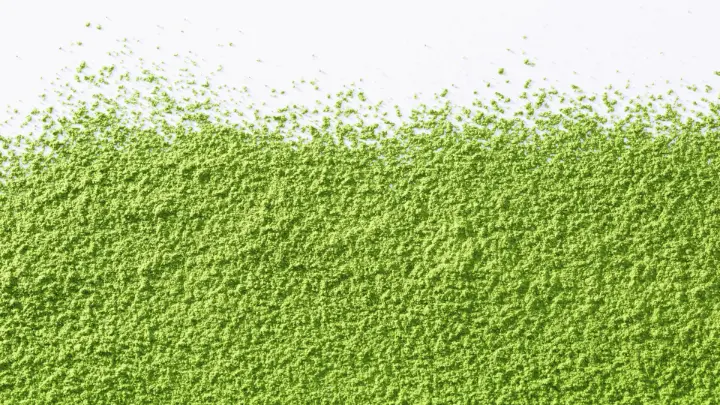
Matcha vs. Gum Disease: How the Green Tea Powder Fights a Hidden Oral Bacterium
A New Ally in Oral Health
For centuries, matcha—finely ground green tea from Camellia sinensis—has been celebrated for its calming rituals and antioxidant properties. But recent research from Japan suggests matcha may have another surprising superpower: it can inhibit Porphyromonas gingivalis, a key bacterium linked to gum disease and tooth loss.
In a study published in Microbiology Spectrum, researchers from the National Institute of Infectious Diseases and Nihon University discovered that matcha extract disrupts P. gingivalis at multiple biological levels. This finding opens new possibilities for natural oral-care products aimed at preventing or managing periodontitis.
Why P. gingivalis Matters
Porphyromonas gingivalis is a major culprit behind periodontitis, a chronic inflammatory disease that damages the tissues supporting our teeth. While the bacterium represents only a small portion of the mouth’s microbial community, it can shift the balance toward harmful bacteria—a phenomenon called oral dysbiosis.
Periodontitis is not just about gums: it has been linked to systemic conditions like diabetes, cardiovascular disease, and even Alzheimer’s.
Eliminating P. gingivalis has therefore become a long-term goal in dental research. However, antibiotics can disrupt beneficial oral bacteria and contribute to resistance. That’s where matcha steps in as a gentle yet potent alternative.
How Matcha Stops the Bacteria
The team extracted bioactive compounds from matcha leaves using a water–acetone mixture. In lab experiments, this matcha extract (ME) inhibited the growth of P. gingivalis, as well as two other periodontal pathogens—Prevotella nigrescens and Fusobacterium nucleatum—while leaving beneficial Streptococcus species unharmed.
Microscopy revealed dramatic changes in the bacterial cell envelope:
Fimbriae, the tiny hair-like structures bacteria use to stick to surfaces, disappeared.
Nano-sized particles formed on the cell surface.
The bacterial membrane became less fluid and more rigid, reducing nutrient transport and energy production.
Interestingly, matcha did not destroy the bacterial membrane outright but rather “stiffened” it—essentially locking the bacteria into dysfunction until they died.
Catechins: The Active Ingredients
The researchers identified nine catechins (a type of polyphenol) from matcha, two of which—epigallocatechin gallate (EGCG) and epigallocatechin (EGC)—showed the strongest inhibitory activity. Both molecules contain a pyrogallol-type B-ring, a structural feature key to their antibacterial effect.
Matcha contains higher proportions of these catechins (over 60% of total catechins) compared to ordinary green tea, explaining why matcha has stronger antibacterial properties.
From Lab Bench to Mouthwash
To test whether these effects translate to humans, a small clinical trial was conducted with 45 patients suffering from chronic periodontitis. Participants were randomly assigned to rinse twice daily with one of three mouthwashes:
Matcha,
Barley tea, or
Sodium azulene sulfonate (a common anti-inflammatory).
After one month, saliva samples showed that matcha mouthwash significantly reduced P. gingivalis compared to pre-intervention levels. Some patients also showed a modest improvement in gum pocket depth—a key indicator of periodontal healing—though not statistically significant across all measures.
No adverse effects were reported, suggesting that matcha-based oral care is both safe and promising.
Beyond Green Tea: A Multi-Mode Defense
What makes matcha remarkable is its multimodal action—it targets bacteria through several pathways:
Disrupting membrane structure and function
Reducing bacterial adherence to surfaces
Inducing bacterial aggregation (clumping), which may prevent colonization
Interfering with energy generation within bacterial cells
This multifaceted mechanism means P. gingivalis would have a harder time developing resistance, unlike with single-target antibiotics.
The Future of Matcha in Dentistry
While these findings are encouraging, the researchers caution that larger clinical trials are needed. Future studies might explore alternative delivery methods, such as gels or injections that reach deeper gum pockets, where bacteria thrive.
Still, this study adds scientific weight to an old tradition: sipping or rinsing with green tea might not only calm your mind—it could help preserve your smile.
Reference
Nakao, R., Takatsuka, A., Mandokoro, K., Narisawa, N., Ikeda, T., Takai, H., & Ogata, Y. (2024). Multimodal inhibitory effect of matcha on Porphyromonas gingivalis. Microbiology Spectrum, 12(7).
DOI: 10.1128/spectrum.03426-23